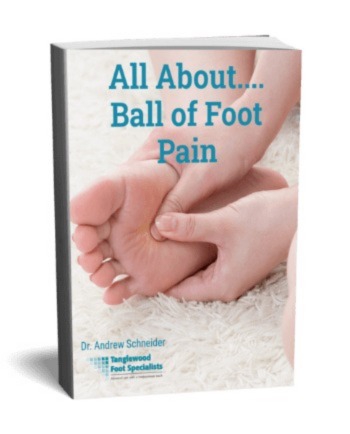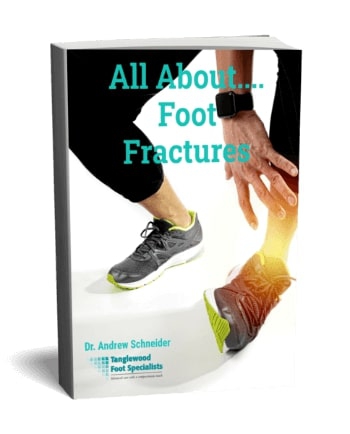Triathletes are my favorite overachiever patients. You see, most of the athletes that I see in my practice do one sport at a time.
 Boring!
Boring!
My triathlete patients are training for swimming, biking, and running ALL AT ONCE! Now that's hardcore.
Whether you're training for a sprint triathlon or your next Ironman race, it is common for an athlete to injure your foot or ankle.
Here's the good news: It's rare to suffer a foot injury from swimming. So you're you're already 1/3 of the way to injury-free success!
My mission is to get you the others 2/3 of the way. To train for your triathlon without having to worry about foot or ankle pain. To keep you healthy so you are able to keep doing the competition you love to do. I'm here to partner with you to help you reach your performance goals.
But don't wait for your pain to be so bad that you have to stop the events you love!
At the first sign of foot pain come into the office for an immediate appointment . Let me help keep you on the road.
The Most Common Triathlon Foot Injuries Include:
Achilles Tendonitis
The Achilles' tendon is a strong tendon that attaches to the back of your heel. It's can be injured as a result of both biking and running. The pain may start intermittently, but don't wait. Achilles' tendon pain can quickly become debilitating. It will keep you out of your training longer than you'd like.
I know this pain well. I suffered with Achilles tendonitis when I was training for my first half-marathon. It made me have to skip the first race I was training for and reset my expectations. I don't want you to have to go through that. I got past it though, and was able to reach my goal and finished my first half-marathon.
The sooner you come in to get your Achilles tendon pain checked, the sooner I can get you back to running and biking without pain.
Iliotibial Band (IT Band) Syndrome
The IT band is a long strap of connective tissue that extends from the hip down the outside of the leg and connects to the side of the knee. Seems a little high up for a podiatrist? Well the cause of IT band syndrome is often due to instability of the feet.
IT band syndrome in competitive triathletes can be caused by both biking and running. First, your bike may need to be properly fit. If you're not sitting correctly on your bike it can cause IT band syndrome to develop. It can also be a problem if you have restricted float on your pedals. Also, if your running gait is unstable, you can have pressure running up the outside of your foot all the way up to your IT band.
There are exercises to stabilize your gait during your run. You can also be more stable on your bike. We are here to identify the problem and get you back on the road.
Stress Fractures
All athletes are at risk for developing a stress fracture . As a triathlete, you have double the risk. First of all, you have the same risk as any other runner. Repetitive stress on your feet can cause the bone to weaken and fracture.
During a triathlon, or a swim-bike brick, you have extra pressure on your feet. This is because you run from the swim to the transition area while barefoot. It is important for you to change your running gait while barefoot. This will lower the chance of a stress fracture developing.
Signs of a stress fracture includes persistent pain and swelling. My office has state-of-the-art digital x-ray to be able to identify even the smallest stress fracture. The sooner you treat a stress fracture, the quicker I can help you can get it healed. Waiting can lead to severe injuries and will delay your return to working out.
Morton’s Neuroma
Morton's Neuroma is an inflamed and enlarged nerve in the ball of your foot. It is a main cause of pain in that area. The sharp pain can worsen with tight shoes and pressure on the ball of the foot? Sound familiar?
Triathletes often suffer from pain from a Morton's neuroma because of your time on the bike. Cycling shoes are stiff and narrow, putting more pressure on the nerve. And you pedal right on the ball of your foot, adding more pressure. To add insult to injury, running's not going to help the matter. So if you start feeling a pain on the ball of your foot, come into the office before it sidelines your training.
Plantar Fasciitis

If you've heard about plantar fasciitis before, it's because it is one of the most common foot overuse injuries. This is true for athletes and non-athletes. Some people tell me that they have an incredibly sharp, stabbing pain in the bottom of their heel when they get out of bed in the morning. Others are more graphic, like they're stepping on broken glass!
The plantar fascia is a ligament on the bottom of the foot that becomes inflamed where it attaches to the heel. It a very common running injury. The biggest problem is that people wait too long to get it checked out. I've seen people in the office who waited TWO YEARS before coming in to getting it checked. It probably won't go away on its own, but we can help. Don't wait, though. The sooner you come in, the quicker your foot pain will go away. Most people kick themselves for not coming into the office earlier.
There are other causes of foot and ankle pain in triathletes, but these are the most common ones that you'll encounter.
If you've had pain for a while, and it doesn't seem to be getting better on its own, I can help. You need to take the first step to come into the office to see your sports medicine podiatrist.
Call the office at 713-785-7881 and we'll get you scheduled for an immediate appointment. You can also request an appointment here on the website . Don't worry, we check often and will call you back to schedule.
It's time to get you back to your training. It's time for you to be able to train and compete in your next triathlon without foot or ankle pain.























